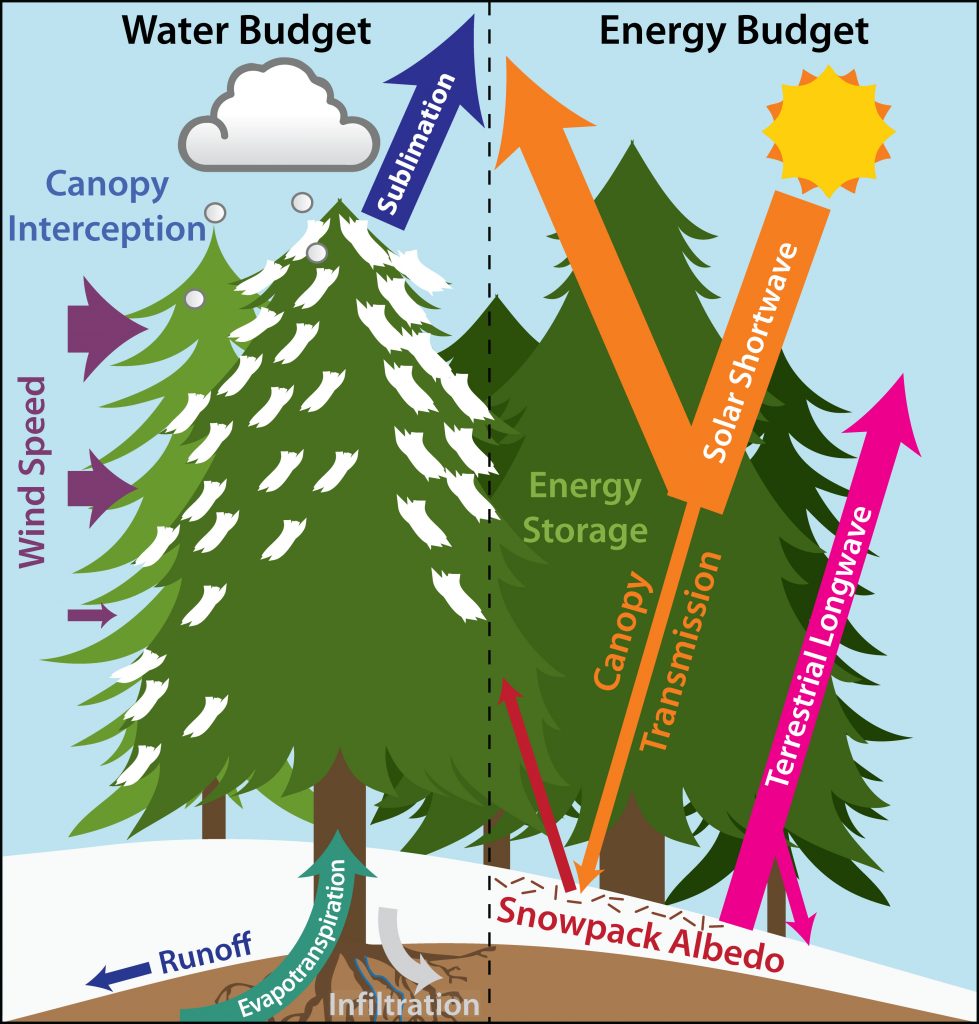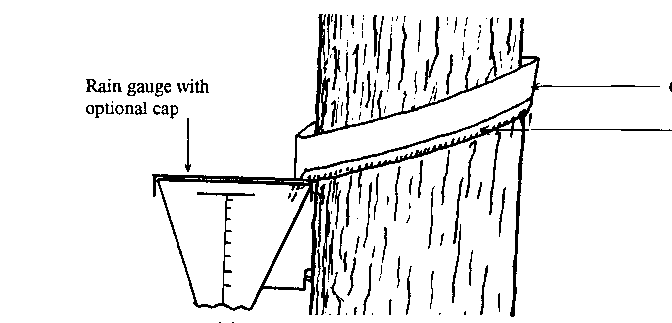Interception and potential evapotranspiration
This unit completes the list of processes that provide water vapor to the atmosphere, and introduces the concept of potential evapotranspiration as a reference for assessment of the water vapor supply to the atmosphere.

Goals
The goal of this unit is to describe and quantify water vapor release into the atmosphere from water and snow intercepted by the canopy and to provide a reference to which to compare the actual water supply.
After successful completion of this unit students will be able to
- Explain and distinguish interception and interception loss
- Describe how interception can be measured
- Explain the hydrometeorological importance of interception and interception loss
- Determine potential evapotranspiration and reference-crop evapotranspiration
- Discuss and identify evapotranspiration limiting processes
- Apply simple “models” to assess interception and discuss their short-comings (graduate students)
Students’ tasks
- Read Dingman’s Chapter 6.6 to 6.8.3.4 (included)
- Take notes and prepare to fill out the questionnaire prior to the deadline
- Work the problems assigned to your class level in this Unit 18 Applications sheet.
- Discuss the figures in this Unit 18 map collection online. Recall a real discussion only happens when you start early. Thus, the first post is due on Tuesday followed by at least another post.
© Nicole Mölders | All rights reserved
